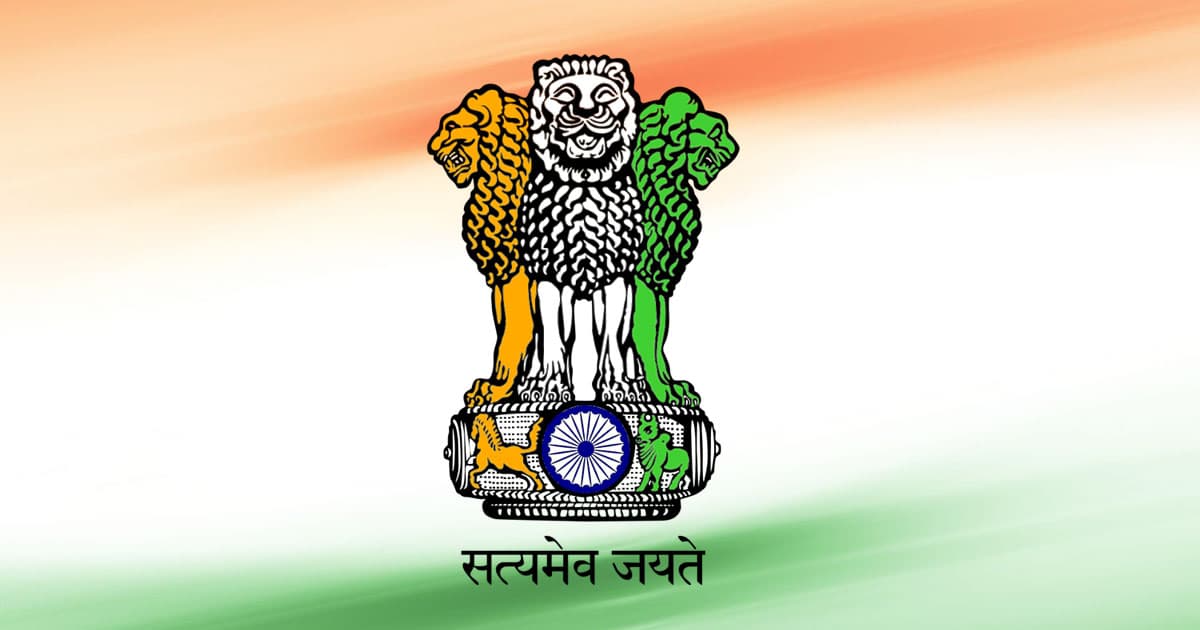The National Emblem of India holds a special place, both in the history and the present of India, and it was on January 26, 1950, the historic moment when India became a republic. This symbol was officially adapted from Ashoka’s Lion Capital situated at Sarnath, UP, and is the pride of every Indian.
A symbol of the country’s integrity and sovereignty, here is the history and significance of India’s National Emblem.
Structure
- The National Emblem has four lions (one hidden from view) and symbolizes power, courage, and confidence. It stands on a circular abacus which is girded by four smaller animals, which is symbolic of guardians of the four directions- the lion of the north, the elephant of the east, the horse of the south, and the bull of the west.
- The Bull represents hard work and steadfastness, Elephant represents strength, Lion represents bravery and the Horse represents loyalty, speed, and energy.
- The Dharma Chakra features right below the four lions, has 24 spokes which represent 24 hours in a day, signifying that time cannot be bounded and its passage is inevitable. It also provides the teaching of always moving forward in life.
- The abacus rests on a lotus in full bloom, which means fountainhead (creativity/fullness) of life. The motto ‘Satyameva Jayate’ inscribed below the emblem, which is a quote from Mundaka Upanishad in Devanagari script and means truth alone triumphs.
- There are other versions of the symbol as well. In Buddhism, the animals represent four phases of Buddha’s life and in Hinduism, it is said to depict the reign of emperor Ashoka in the four geographical directions and the wheel means his enlightened rule.
History
- The Lion Capital is a sculpture which was first erected at the top of the Aśoka pillar at Sarnath, which is an important Buddhist site, as this is believed to be the place where Siddhārtha Gautama (Gautama Buddha) first taught the Dharma, and Buddhist Sangha came into existence through the enlightenment of Kondanna.
- Built-in 250 BC, the pillar is also called Aśoka Column and stands strong even today.
- Ashoka, fondly called by people as Ashoka the Great, was an Indian Emperor of the Maurya Dynasty, who ruled almost all of the Indian subcontinent from c. 268 to 232 BCE.
- After witnessing the bloodshed in the Kalinga war, he was filled with grief and remorse and chose a non-violent and peaceful approach to life and adopted Buddhism.
- To spread the message of love and peace, he built several sculptures, stupas, and religious sites. The Lion Capital is one of the most famous architecture under his name.
What does it command?
Currently, the symbol is used by the Government of India on all official documents that represent the Republic of India. It is the official seal of the President of India and the Central and state governments. If you notice, all Indian currency, passports, and Government official letterheads carry that symbol as well.
Lion Capital has been moved from the Ashok Column to the Sarnath Museum and has been preserved there under the strict supervision of the Uttar Pradesh police force since 1910. There, it is kept at a temperature between 200C and 240C, and humidity of 45 to 55 percent.


